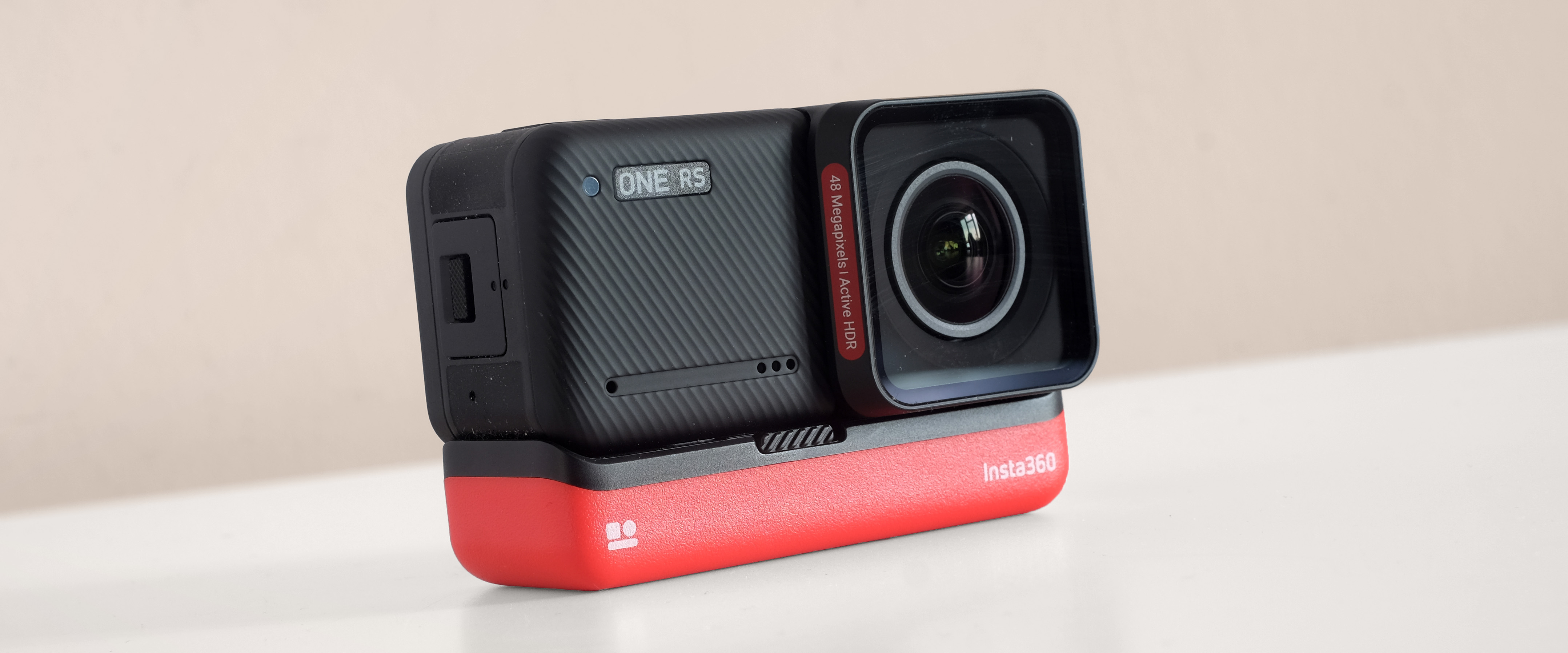TechRadar Verdict
The One RS brings Insta360's modular action camera up to date with improved image quality and a superior workflow to its predecessor. It's a slight shame about the small screen, but otherwise the One RS' price makes it a fine alternative to its GoPro rivals – if you need that modular flexibility.
Pros
- +
Good in-camera stabilization
- +
Sharp-looking 4K video
- +
Surprisingly intuitive interface
Cons
- -
Tiny preview screen
- -
Minor image quality issues
- -
Limited slo-mo capabilities
Why you can trust TechRadar
Two-minute review
The Insta360 One RS is a modular action camera and the follow-up to the Insta360 One R from early 2020. This new model looks a lot like the old one, but just about everything has changed at least a little.
The One RS has a new battery base, plus a fresh camera lens/sensor module with a larger sensor chip. There's also a new central module with a faster processor, newer-spec Wi-Fi and a redesigned mic array.
The Insta360 One RS fixes all of the workflow issues present when we reviewed the Insta360 One R two years ago. Good in-camera stabilization means no phone app post-processing is required. You can pull footage right off the camera, which shows up as a disk drive when plugged into a PC or Mac.
This camera's image quality is better in numerous ways, too. The software stabilization no longer causes strange image distortions, the HDR video mode is ghosting-free from our tests, and the integrity of detail rendering off into the distance is improved.
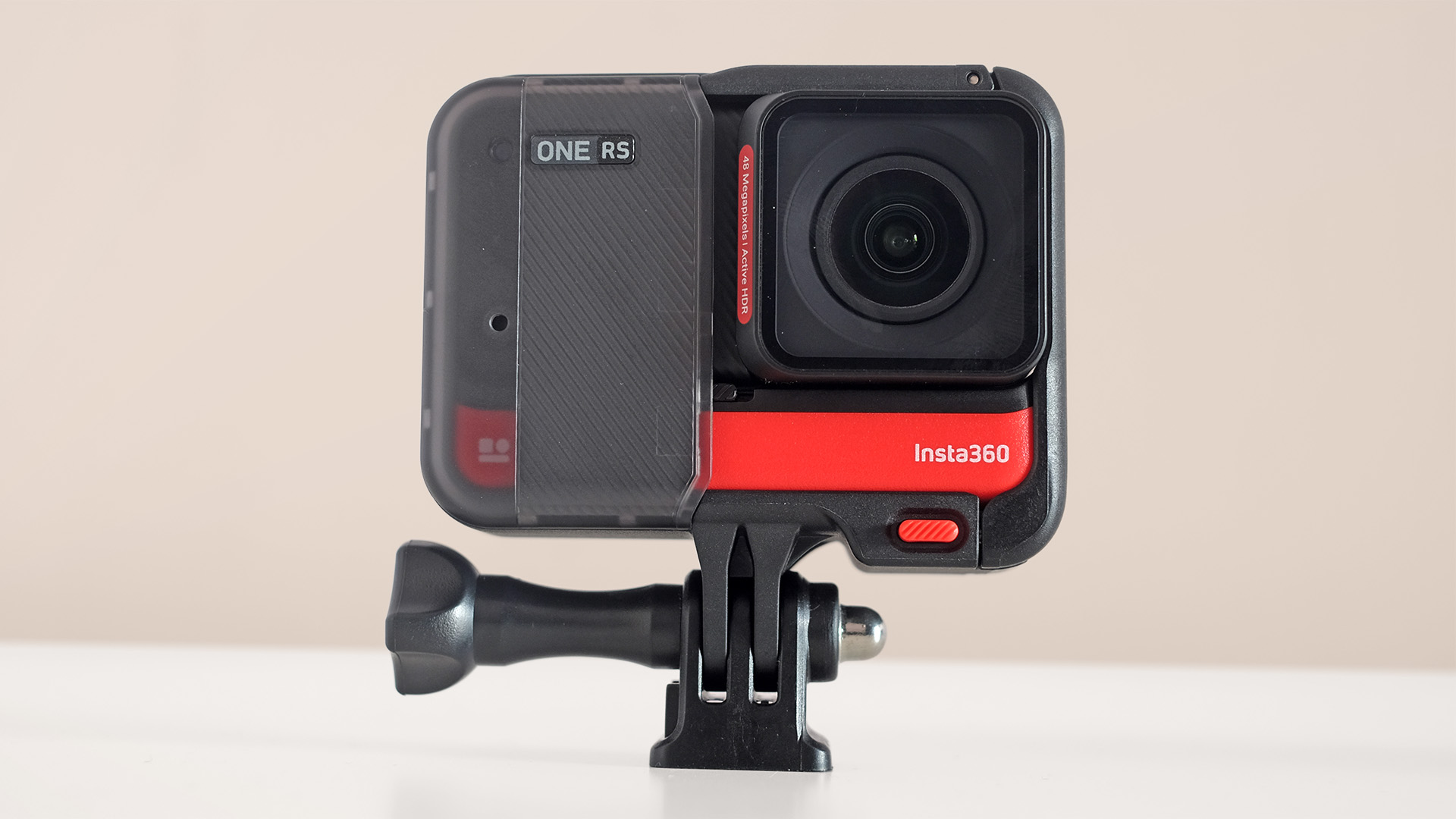
We frequently like the videos shot with the Insta360 One RS more than those of the GoPro Hero 10 Black, even though GoPro still has better processing in some respects. At 4K resolution, Insta360’s footage comes across more detailed, even though fine detail will typically have lesser fidelity than GoPro’s when you look right down at its constituent pixels. You can read more about this in the 'image quality' section of the review below.
The Insta360 One RS also, crucially, retains compatibility with the existing lens modules. These are the 1-inch sensor and the 360-degree mod, which can be bought in a double pack with the new 4K camera block – the default lens of the One RS.
Should you buy a Insta360 One RS instead of a GoPro Hero 9 Black or Hero 10 Black? Only if you’re going to buy into the modular concept. While the preview screen here is ultra-bright, it is tiny, and image issues like purple color noise and aliasing may cause headaches, even if the footage seems – to our eyes – often more engaging that what our GoPro spits out.
Insta360 One RS price and release date
The Insta360 One RS launched in March 2022, two years after the Insta360 One R.
A standard package costs $299.99 / £279.99 / AU$569. That includes the 4K Boost Lens, battery and main unit. The Twin Edition adds a 360-degree lens and costs $549.99 / £499.99 / AU$919.99. You can also get the Insta360 One R with the 1-inch Wide Angle lens for $549.99 / £499.99 / AU$919.99.
The basic bundle is the same price as that of the last generation, but there’s a jump in the cost of the dual-module bundle – up from $479.99. Judging by the 4K-only kit, the Insta360 One RS is cheaper than the GoPro Hero 10 Black, the DJI Action 2 and even the GoPro Hero 9 Black, making it pretty appealing.
Design and display
- 5m water resistance
- Three-part modular design
- Small 1.5in screen
For this first section we're going to assume you don’t already know about the old Insta360 One R, because the designs of the two cameras are very similar. The Insta360 One RS is split into three sections.
The base block holds the battery. It is the Lego-like foundation of the camera, into which the sensor/lens block and the main camera brain section lock.
Modular designs are typically larger than 'standard' ones, but the Insta360 One RS’s dimensions are very similar to those of the GoPro Hero 9 Black and 10 Black. It is waterproof to 5m depth – that's only half that of a recent GoPro, but still impressive for a modular design.
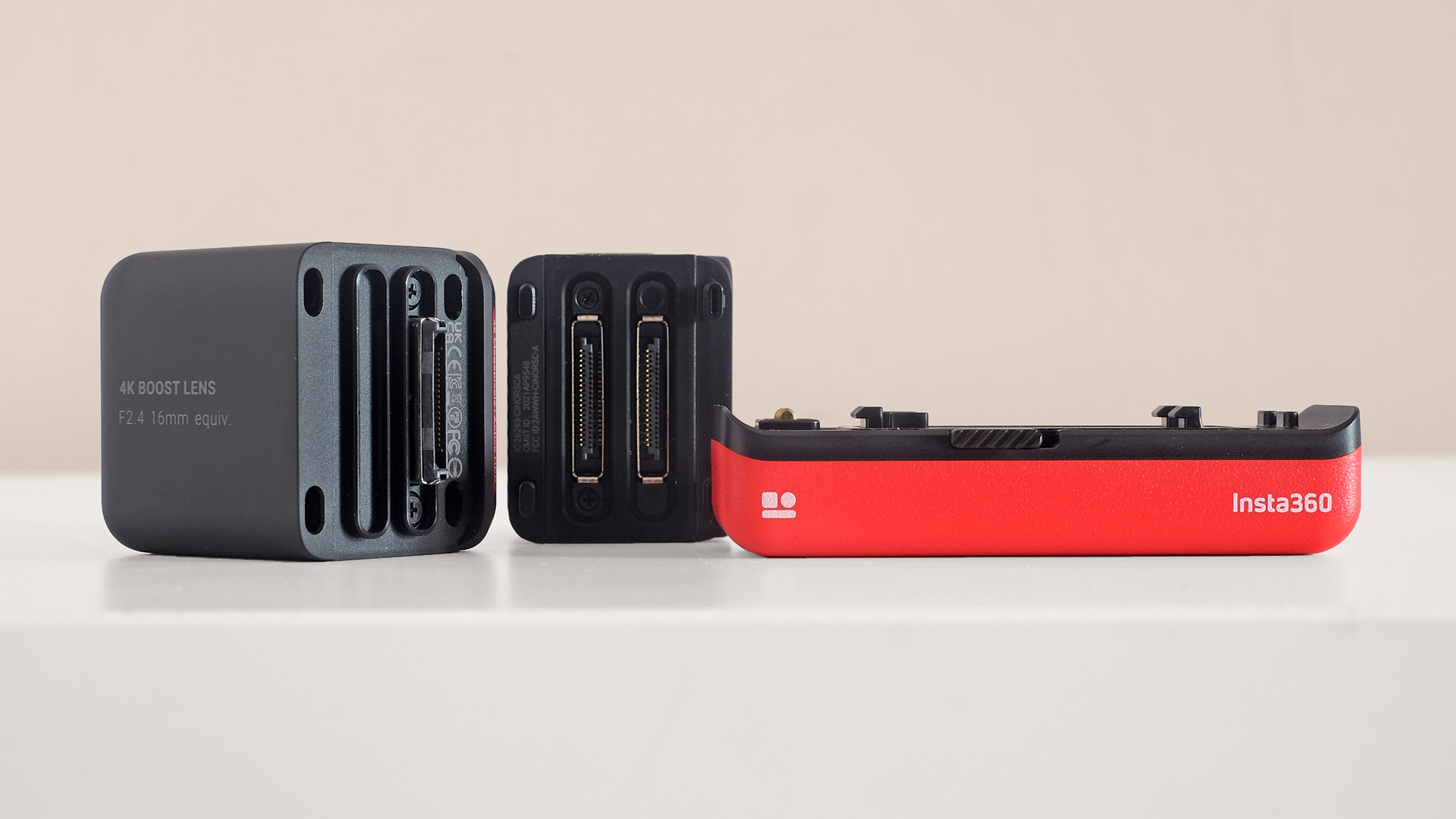
You should use the outer case if you are going to go near water, though. It’s a classic action camera cage that adds some extra insurance, because you can pull the two top modules apart slightly without disconnecting the battery base. There’s just one flap on the side, which covers the microSD slot and the USB-C charge/mic adapter socket.
The Insta360 One RS’s main module, the one with the screen, has two sockets on its inner side, used to connect to the lens modules. This makes the design reversible, so you can see the preview image whether shooting traditional footage or in vlog style.
This seemed a very neat feature in early 2020, just a short while after the DJI Osmo Action gave us a dual-display action camera option. But today we’re two generations into dual-screen GoPros, and a small preview image is one of the biggest sacrifices involved here.
The Insta360 One RS has a 1.5-inch square screen. It’s a tiny little thing, and its aspect ratio means only a portion of the display is used for the preview image when shooting widescreen video.
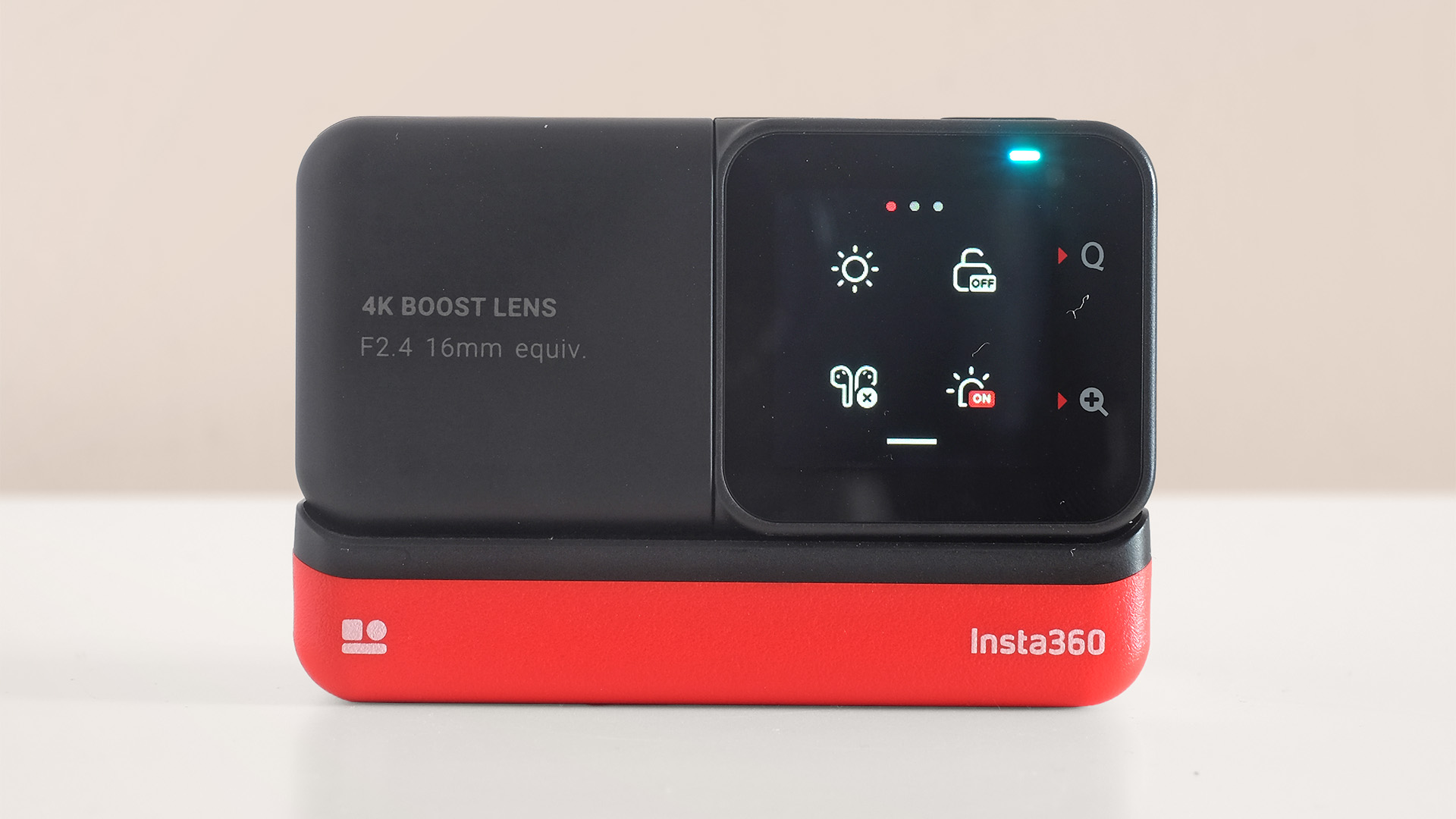
As such, the Insta360 One RS’s screen feels like little more than a tool to check framing and the angle of shooting. These are the most important elements, of course, but with a more traditional large widescreen display you get much more of a sense of how the video is likely to look as you shoot it.
This makes the Insta360 One RS less fun to use than a GoPro. One solution is to use the Insta360 app on your phone, making its screen deliver the preview image. Doing this is mostly painless. There’s a slight lag thanks to wireless transmission, but during testing Insta360’s connection was far more stable than the GoPro Hero 9 Black we used as a comparison throughout the review period.
However, you lose the sense of immediacy of shooting directly from the camera. And using a phone app use just is not going to be feasible on many occasions when you need to use an action camera.
Stabilization
- In-camera stabilization is now the norm
- Highly effect stabilization, just a little below GoPro’s
- Post-processed stabilization available at 4K/30p
When the Insta360 One R arrived, you had to process your videos through the Insta360 app to get stabilization. This effectively meant your phone was doing the work. In-camera stabilization was added in an update, but this time it’s the norm from day one.
Insta360’s stabilization is called FlowState, and it’s used by default in most modes. There is a “Post” mode that lets you apply stabilization in the app on your phone or PC instead, but this is limited to 4K/30p for some reason.
FlowState has provided great results for a couple of years now, and it's no different in the Insta360 One RS. It can successfully smooth-out vigorous motion, the footfalls of runners and the rumble of a bike on rough terrain.
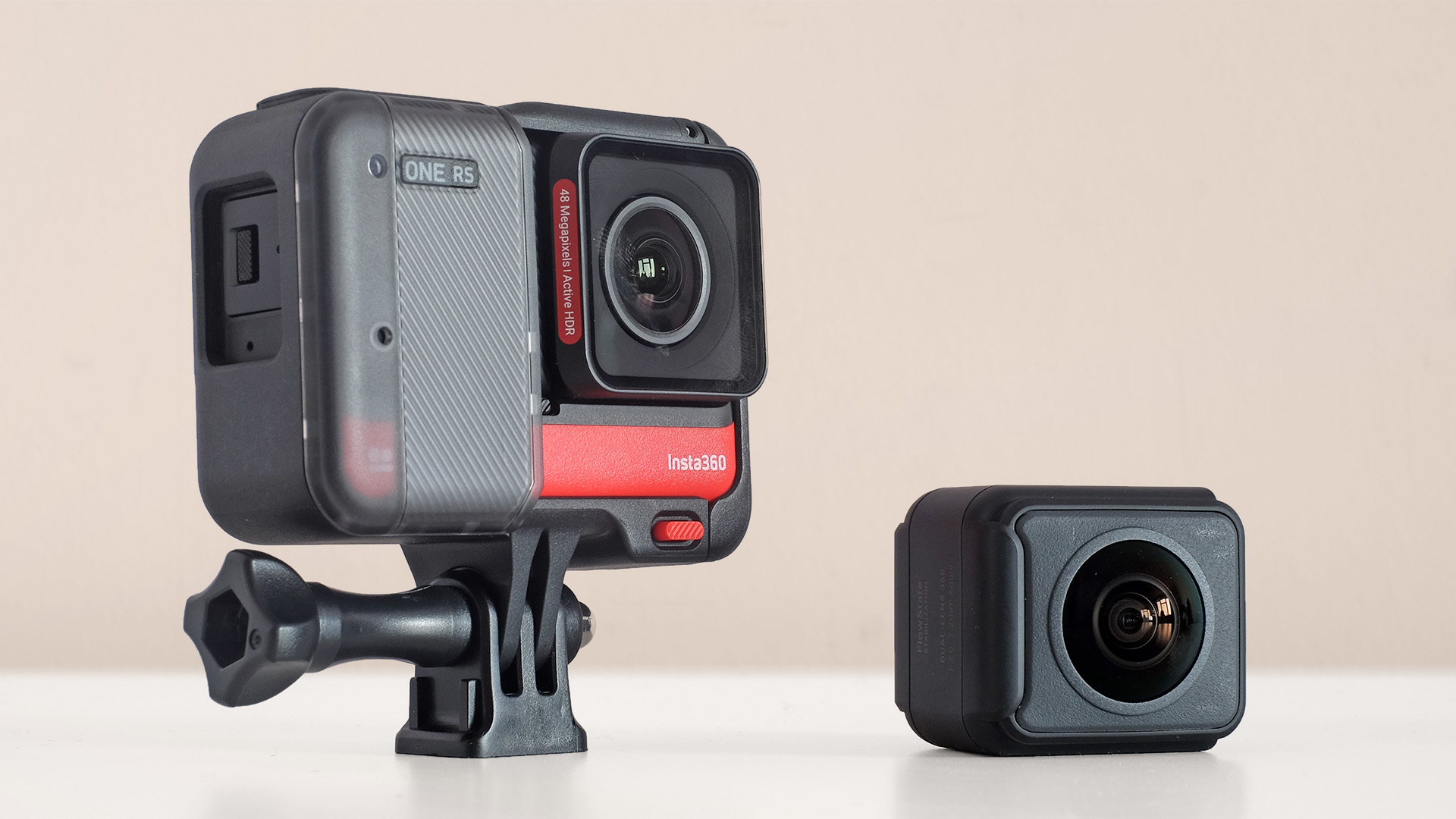
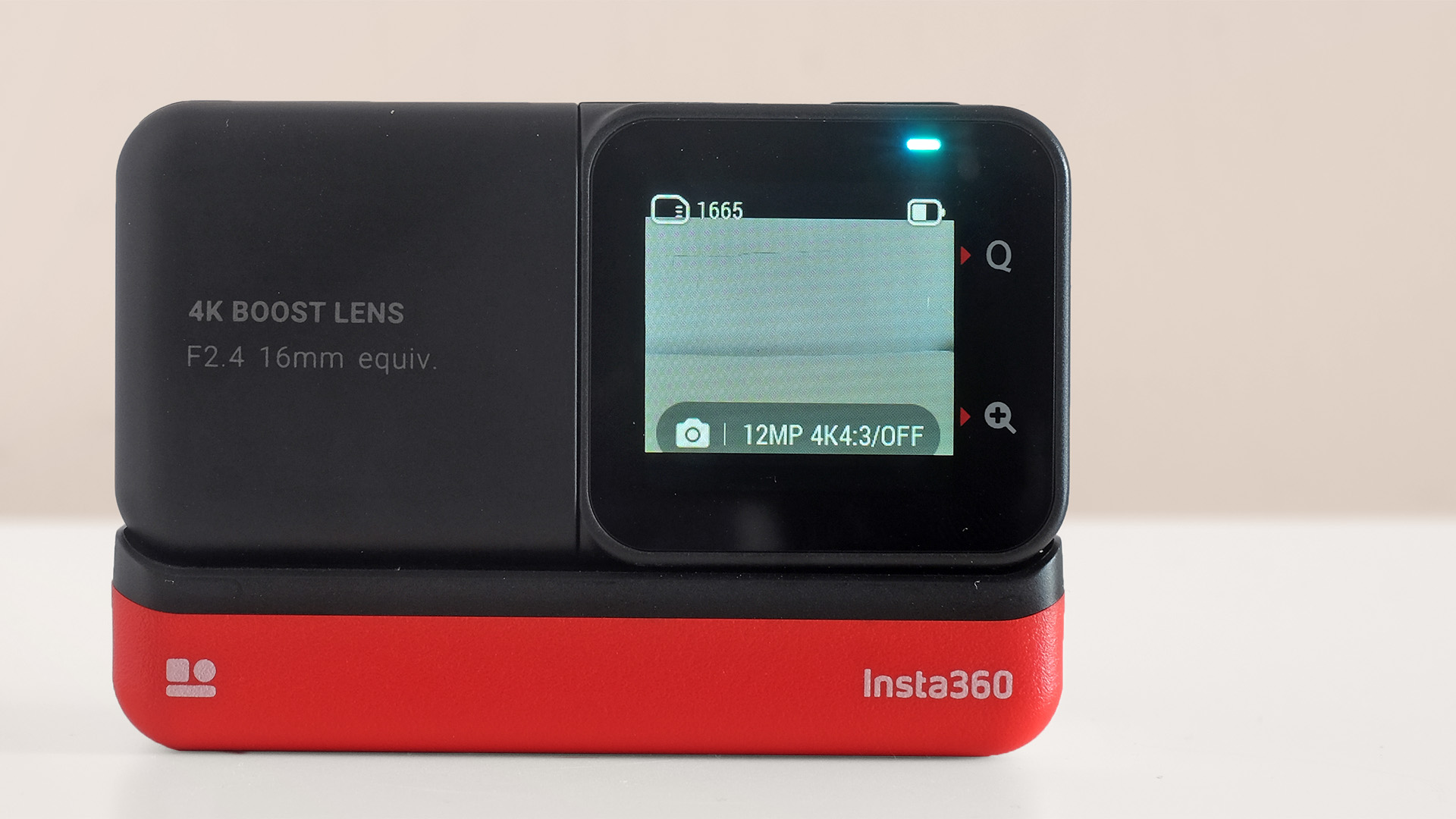
Is it as good as GoPro’s HyperSmooth? A Hero 9 Black in its Boost mode is significantly better at countering lateral motion. But when you look a little closer, this is no surprise. GoPro’s latest Hero cameras have a wider-angle lens than the Insta360 One RS, while its most commonly used 'wide' digital lens actually has a narrower fields of view than the Insta360 One RS’s wide FoV.
GoPro has a little more to work with, with more 'unused' sensor information to smooth out motion – so it has a natural advantage.
You do have some control over the Insta360 One RS’s stabilization. There are 'default' and 'high' modes. The latter doesn't eat into your image more, so must simply use a more advanced algorithm – Insta360 warns that it may reduce the responsiveness of shooting and the preview image.
We didn't see a huge difference between the two when shooting wide-angle video, though. Fingers' crossed 'high' is a precursor to a future horizon-leveling feature, already available in the GoPro Hero 10 Black and DJI Action 2.
Features and modes
- Decent slo-mo modes
- HDR photography is good, but requires phone app
- Fast-to-use interface
The Insta360 One RS can shoot stills, but we wouldn’t recommend buying one for the job. Shooting feels quite slow, with a notable wait between each exposure as the camera processes/saves the files. It’s much like other action cameras in this respect.
It can shoot entirely decent HDR images, but you need to let the Insta360 app actually compile them. Try to dig them straight out of the camera and you’ll just find the separate exposures that are used to make the final picture.
Other stills modes include burst, interval delay and night, which requires a tripod.
Additional video modes include Time-lapse, Timeshift and Slo-mo. The first two speed up action. You’d typically use Time-lapse to shoot something that happens slowly, like a sunset, where the camera is kept still. You choose how often to capture a frame, from every half a second to one frame every two minutes.
Timeshift can be used much more casually. Just treat it like a normal video, then choose your field of view and speed in the Insta360 app on your phone. This is one area GoPro does better, automatically adjusting the speed based on what happens 'on screen'. But Insta360’s version still gets you the basics and looks good in motion.
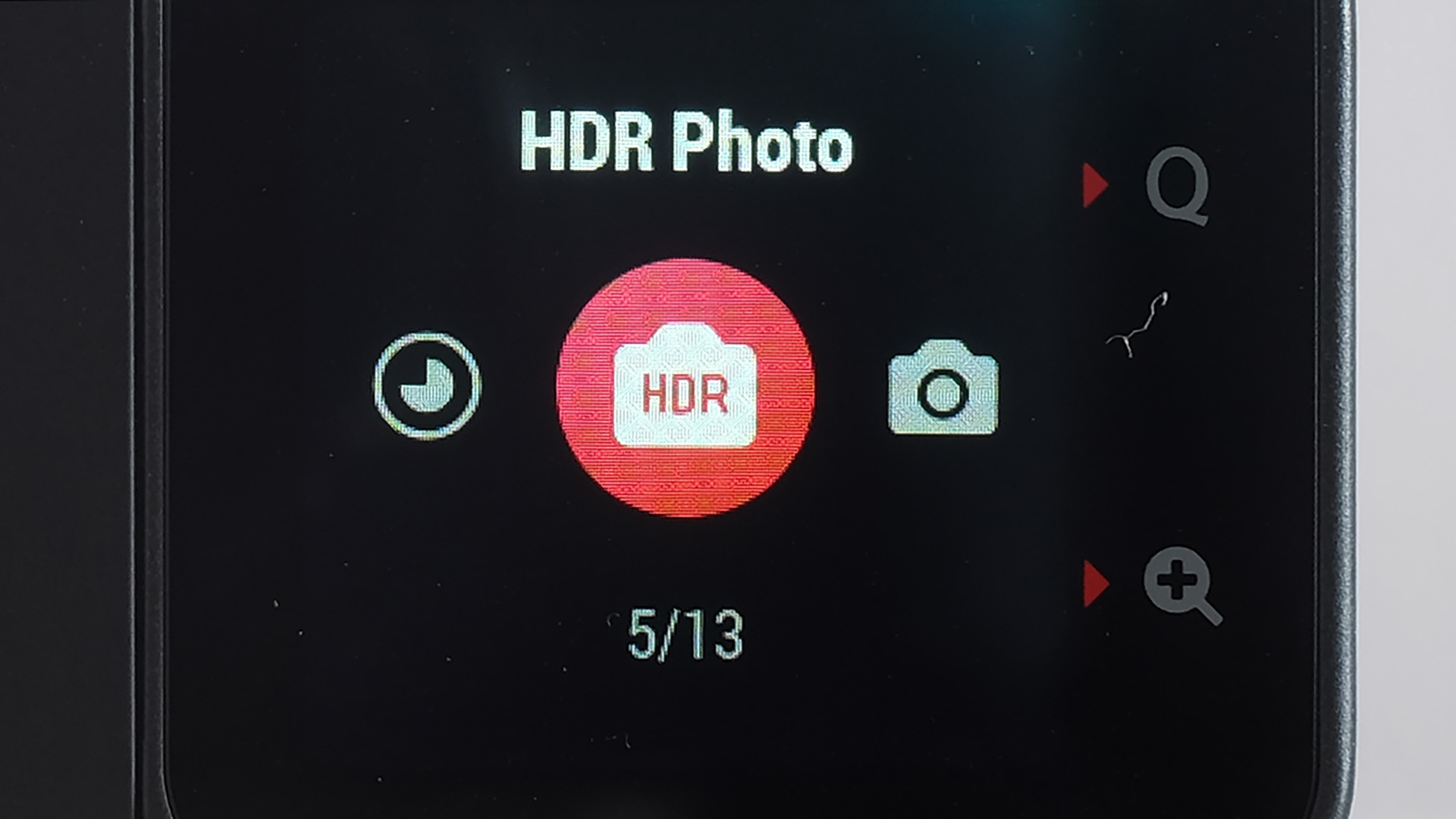
Slo-mo falls behind the DJI Action 2 and GoPro Hero 10 Black quite significantly. There’s no 4K slo-mo, beyond being able to turn 60fps footage into a half-speed 30fps video in post. You can shoot at 2.7K resolution at 100fps, or 1080p at 200/120fps. 4K at 120fps is the gold standard, and the Insta360 One RS does not reach it.
There are some neat features for the more serious video shooter, though. There’s a flat Log color mode for standard video shooting (as well as Vivid/Standard color modes). Insta360 provides easy access manual controls too. Just swipe right-to-left on the preview screen and you can set that color mode as well as shutter speed, ISO, exposure and white balance (note: only white balance is available in HDR video shooting).
Insta360’s software interface is less flashy than GoPro’s, but we find it easier to navigate. While we haven’t directly compared the One RS to the Hero 10 Black yet, it suffers from less lag than the last-gen Hero 9 Black and is much smoother than the One R, too.
New for this generation, Insta360 has added a quick selection “Q” menu, where you store favorite presets. We have mostly ignored them, though, because changing settings manually on the fly is quite snappy. Considering how tiny the Insta360 One RS’s screen is, it's a miracle that it's this coherent to operate.
The Insta360 One RS also has 'digital lenses', letting you pick from four presets between 20mm and 29mm. There’s also a free zoom slider that goes all the way up to 50mm, but video shot at 50mm looks pretty bad.
Image quality
- Great sharpness at 4K
- Some shimmering and aliasing
- Genuinely useful HDR video mode
There is no single verdict to be given on the Insta360 One RS’s image quality, because it can be used with a bunch of different lens and sensor combos. You can plug the 1-inch sensor module from the One R, the long-standing 360-degree mod, or even the original default 4K camera.
For this review we mostly used the new 4K Boost Lens. This ups the resolution from 12MP in old 4K Wide Angle mod to 48MP. However, it's important to acknowledge what kind of sensor this is.
Insta360 hasn’t told us the exact chip used, but it will likely be a phone-style sensor where the design is intended for 12MP readout, with a Quad Bayer array. In other words, don’t expect a massive detail boost over the Insta360 One R or GoPro Hero 10 Black.
This is primarily a 4K resolution action camera. It can shoot at up to 60 frames per second at 4K. While there is a 6K ultra-widescreen mode that shoots at 6016 x 2560 pixel resolution, this appears to use the full width of the sensor and therefore lacks any form of software stabilization. It’s also a less-than-common aspect ratio, and less useful than the 5.7K modes of the most recent GoPros.
However, to our eyes the Insta360 One RS’s 4K footage looks sharper than the GoPro Hero 9 Black’s. This seems to have more to do with the varying aims of their image processing than the capabilities of the hardware.
Insta360’s footage appears less smoothed-out, less preened. Viewed on a large screen this leads to it appearing more detailed, even if some of this is in actuality is down to image data that sits somewhere between true detail and camera noise, particularly in tight, distant textures.
However, the Insta360 One RS does exhibit some issues you just don't see in a GoPro. These include aliasing, particularly cast off small highlight areas like reflections on cars. You will also see shimmering in tight patterned areas, like the roof tiles of buildings and gravel. We don’t see any of this shimmering or aliasing in the GoPro video.
Which is better? A GoPro nets you footage with fewer issues, and often a more pleasant warm color tone, but there’s an open and airy quality to the Insta360 One RS’s 4K video that we just don’t see from the Hero 9 Black.
It’s an odd case of looser processing leading to charming results, something you can only really appreciate when seeing the footage in motion, because when analyzing frames down at pixel level, the GoPro almost always seems superior. This is particularly true of far-away objects like bushes, or that shimmering gravel we already mentioned. The Insta360 is more prone to rendering unrealistic looking patterns in these visual features than the steadfastly consistent GoPro – but the negative part you'll notice in motion is that shimmer.
We do see some significant improvement in this area since the One R and the original 4K camera mod, though. That combo would tend to show detail fizzing in and out of existence when, for example, shooting a runner or cyclist traveling along a gravel path. This has mostly been solved, with a smoother transition from foreground to background.
Use the Insta360 One RS in its standard Video mode and its dynamic range in some conditions is slightly worse than the GoPro Hero 9 Black’s – we noticed this only when shooting into a bright hazy sky and the two are otherwise comparable. This is likely thanks to GoPro’s tone mapping. However, the Insta360 One RS can get a significant upper hand if you switch to its Active HDR mode.
It’s a big upgrade over the Insta360 One R’s HDR video, with virtually no evidence of ghosting this time. This suggests it may use DOL-HDR, where two exposures are captured in one read-out sweep of the camera sensor. In this same hazy sky scene where the GoPro had the upper hand with Auto shooting, the One RS's HDR mode takes an easy victory with a much more vibrant, less noisy-looking foreground.
You shouldn’t use HDR all the time, though. It’s limited to 30fps at 4K resolution and in lots of situations HDR video looks too much like the HDR photos from much earlier generations of phones, with less realistic-looking mid-tones and a hit to color fidelity. It also highlights the purple fringing that is a regular issue with the camera, where three branches against the sky have a violet aura to them.
Much like the processing style that can make your footage look more alive, at the cost of texture shimmering and aliasing that may need to be fixed in post, HDR is a tool that puts the onus of responsibility on you.
As with all action cameras, the Insta360 One RS’s low-light image quality is poor. But it is less of a mess than the GoPro Hero 9 Black we compared it to, with noticeably less splotchy noise even at the camera’s maximum 6400 ISO setting (at 4K/30p).
Sound and battery life
- Additional sound modes, but no huge improvement in sound quality
- Has an additional microphone compared to its predecessor
- Around 75 minutes of 4K video capture (with 4K lens)
Insta360 has changed the mic layout for the One RS, adding an additional microphone to allow for more sound modes. As well as wind noise reduction, you can choose Stereo or Directional Enhancement. These two will play with how the sound recorded by the two right/left mics in the central module sits in the final audio mix.
It’s nice to have, but actual sound quality seems more of a sideways step from the One R. There is lesser treble and upper-mid clarity in this new mic setup, and both dynamic range and sound quality in general are not close to the GoPro Hero 9 Black or Hero 10 Black.
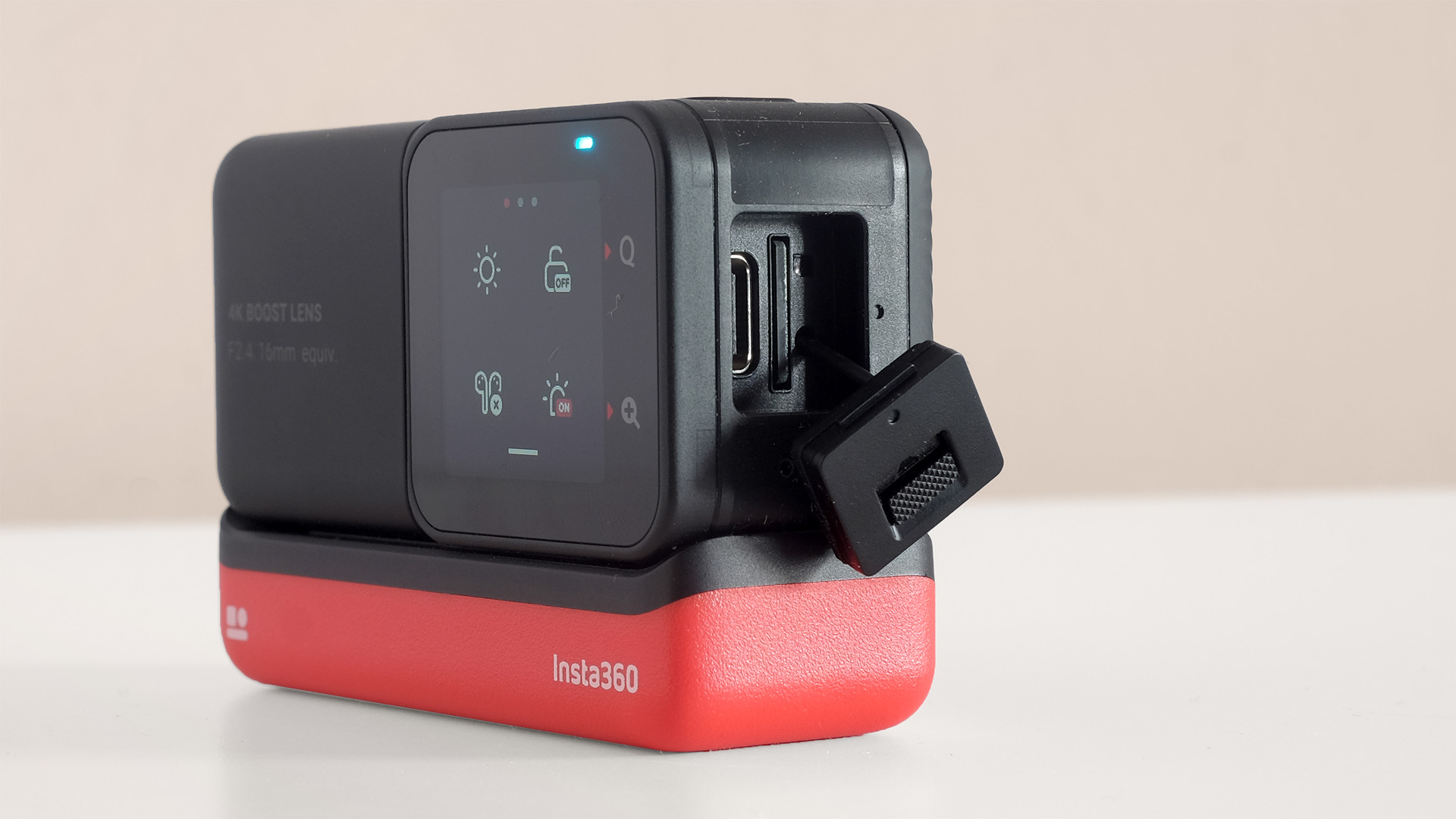
The Insta360 One RS also has a new battery, a slightly larger one with capacity of 1,445mAh instead of the old 1,190mAh. There's good news for fans considering the upgrade: the older batteries fit the new kit just fine (although the outer shell obviously won’t as the new battery is slightly taller).
It lets the Insta360 One RS last up to 75 minutes when shooting 4K/60 video. This is similar to the GoPro Hero series, although less than the DJI Action 2 with its front touchscreen module in tow.
Insta360 says you will be able to use your One RS camera as a webcam, but this feature was not available with our pre-release software. This company’s cameras often feel a bit like work-in-progress efforts when we come to review them, but the Insta360 One RS is one of the most solid we’ve tried at launch to date. We encountered just one crash/hang, where the camera refused to start video capture. A reset sorted it out.
Should I buy the Insta360 One RS?
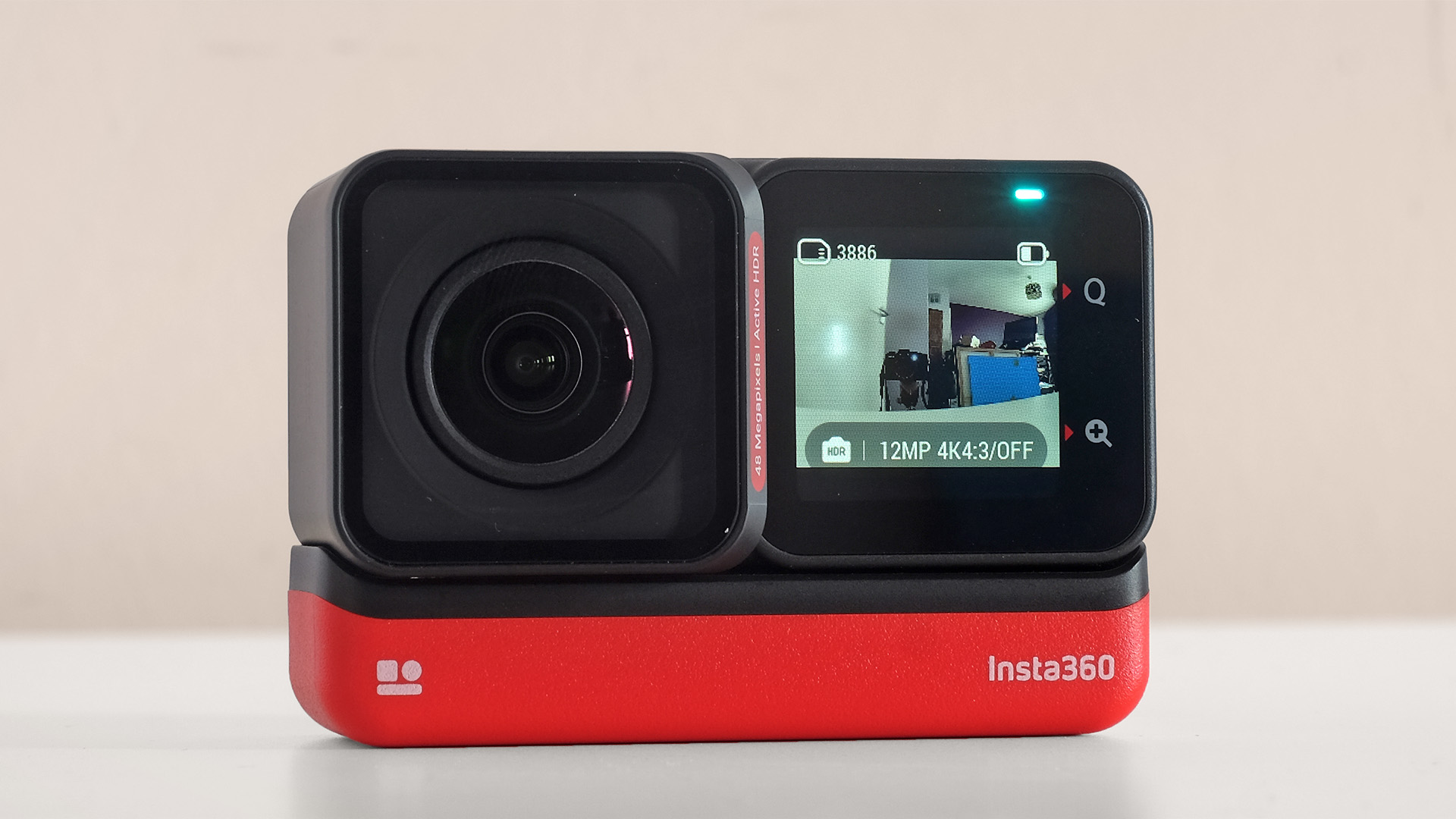
Buy it if...
You need modular flexibility
The Insta360 One RS lets you take a 360-degree and standard wide-angle action camera out with you, while needing just one main body and one battery. It is also reassuring to see Insta360 use the same connector as the last generation, so fans of the original One R considering an upgrade are not left out in the cold.
You need high-quality 4K video
This camera can produce lovely-looking 4K footage with smooth motion that, to our eyes, appears more detailed than a GoPro Hero 9 Black thanks to Insta360’s approach to processing. There's also a less severe sensor/lens crop at the default FoV.
You're tired of workflow headaches
The Insta360 One RS solves all of the old workflow issues of the company's previous camera, by letting you pull video straight off the camera rather than having to export clips through the Insta360 app. Only a few modes require app intervention, which is a big improvement.
Don't buy it if...
You like to use a rear screen while filming
The Insta360 One RS has a tiny screen, one that gives you less of a sense of connection with what you’re shooting during capture. While Insta360 has done a remarkably good job of making the interface feel good to navigate, we do consistently miss having a larger display to refer back to.
You need super-consistent results
There are a few recurring issues with the Insta360 One RS’s video, like aliasing in certain high-contrast objects, shimmering in tight-knit textures and purple fringing. While we prefer the camera’s video to GoPro’s in some respects, these little problems can make it seem less consistent.
You need powerful slo-mo modes
The Insta360 One RS does not have particularly powerful slo-mo shooting. There’s no 4K at 120fps, with the cap set at 2.7K, 100fps. If you want super-powered slo-mo, check out the more expensive DJI Action 2 or GoPro Hero 10 Black instead.
- These are the best action cameras you can buy right now
Andrew is a freelance journalist and has been writing and editing for some of the UK's top tech and lifestyle publications including TrustedReviews, Stuff, T3, TechRadar, Lifehacker and others.
